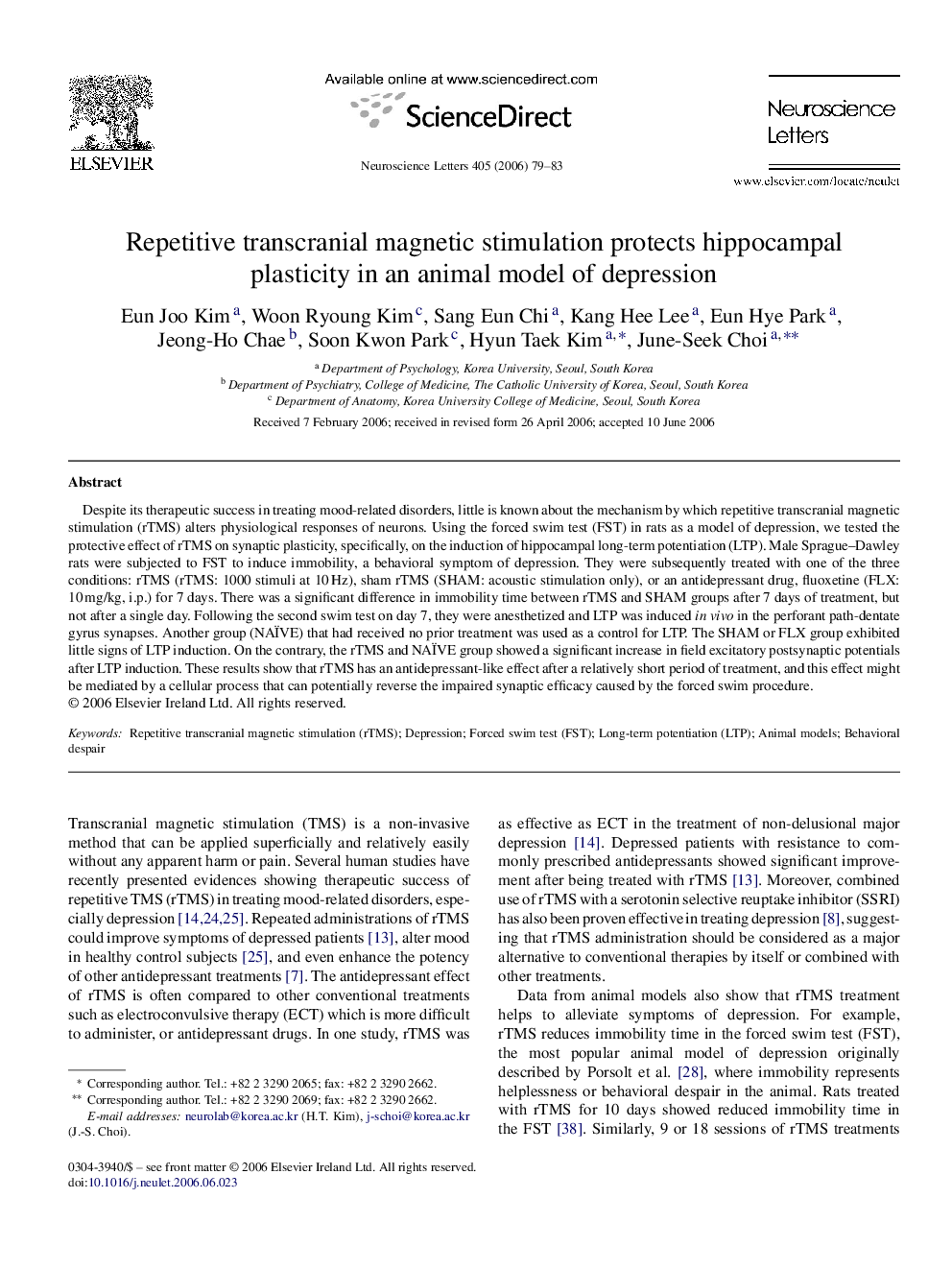| Article ID | Journal | Published Year | Pages | File Type |
|---|---|---|---|---|
| 4350203 | Neuroscience Letters | 2006 | 5 Pages |
Despite its therapeutic success in treating mood-related disorders, little is known about the mechanism by which repetitive transcranial magnetic stimulation (rTMS) alters physiological responses of neurons. Using the forced swim test (FST) in rats as a model of depression, we tested the protective effect of rTMS on synaptic plasticity, specifically, on the induction of hippocampal long-term potentiation (LTP). Male Sprague–Dawley rats were subjected to FST to induce immobility, a behavioral symptom of depression. They were subsequently treated with one of the three conditions: rTMS (rTMS: 1000 stimuli at 10 Hz), sham rTMS (SHAM: acoustic stimulation only), or an antidepressant drug, fluoxetine (FLX: 10 mg/kg, i.p.) for 7 days. There was a significant difference in immobility time between rTMS and SHAM groups after 7 days of treatment, but not after a single day. Following the second swim test on day 7, they were anesthetized and LTP was induced in vivo in the perforant path-dentate gyrus synapses. Another group (NAÏVE) that had received no prior treatment was used as a control for LTP. The SHAM or FLX group exhibited little signs of LTP induction. On the contrary, the rTMS and NAÏVE group showed a significant increase in field excitatory postsynaptic potentials after LTP induction. These results show that rTMS has an antidepressant-like effect after a relatively short period of treatment, and this effect might be mediated by a cellular process that can potentially reverse the impaired synaptic efficacy caused by the forced swim procedure.
